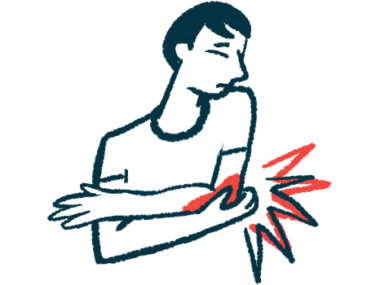Dupilumab may help ease itch for people with different EB types
11 of the 13 patients in study perceived benefit from off-label dupilumab
Written by |

Dupilumab, an injection therapy approved for certain inflammatory disorders, may be an effective option to help ease itch and reduce blistering in people with different subtypes of epidermolysis bullosa (EB).
That’s according to a study, “Dupilumab improves itch and blistering in different subtypes of epidermolysis bullosa,” which was published as a letter to the editors of the Journal der Deutschen Dermatologischen Gesellschaft.
EB encompasses several different disorders that are characterized by abnormally fragile skin prone to wounds and blistering. There are several subtypes of EB, and itch is a frequent symptom across multiple EB types.
Dupilumab designed to block IL-4 inflammatory signaling molecule
Dupilumab is an antibody-based medication that’s designed to block the activity of interleukin-4 (IL-4), an inflammatory signaling molecule that plays a central role in certain types of immune responses, including allergic reactions. The therapy is approved under the brand name Dupixent (sold by Regeneron Pharmaceuticals and Sanofi) for certain inflammatory conditions including atopic dermatitis (eczema) and prurigo nodularis, and data suggest it can potently ease itching in those disorders.
In the letter, a quartet of scientists in Germany reported on outcomes from 13 people with EB who were treated with dupilumab off-label, meaning the use of a medication for an indication not formally approved by regulators. The therapy was given by under-the-skin (subcutaneous) injection, with a first injection of 600 mg followed by injections of 300 mg every other week.
The patients in the report ranged in age from 6 to 78, and they included a range of EB subtypes. Specifically, one patient had EB simplex, two had junctional EB, and the other 10 had dystrophic EB (four recessive and six dominant). Before starting on dupilumab, all 13 reported severe itch, with a median score of 8 on a scale from 1 to 10.
Two of the patients — one with EB simplex and one with dominant dystrophic EB — discontinued dupilumab after the second dose, one due to worsened blistering and the other due to worsened itching and fatigue.
“Dupilumab was tolerated well by most, but not all, patients, while unspecific skin reactions occurred in two patients, leading to treatment discontinuation,” the researchers wrote.
In the remaining 11 patients who tolerated the therapy well, itch rapidly eased following dupilumab, with a median itch score of 3. Reduced blistering was also noted following treatment. The researchers said better sleep and improved quality of life followed the decrease in skin symptoms.
“In our cohort, 11 of 13 patients perceived a benefit from treatment with dupilumab, irrespective of their EB subtype or age, suggesting that a broader spectrum of EB patients may benefit from this drug,” the researchers concluded.






